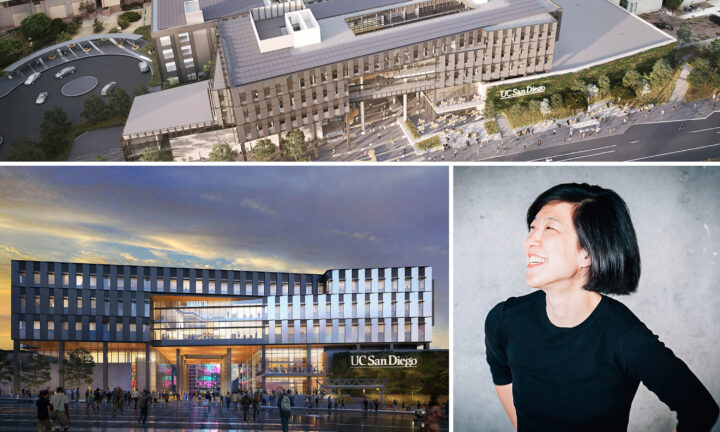Sunmin Whang is a designer with LMN Architects. She has worked in New York, Boston, Chicago, and the Netherlands, and has found a home in Seattle, focusing on educational and institutional projects. She loves getting involved in the design community as part of the LMN pavilion team for the Seattle Design Festival, build days with Sawhorse Revolution, or attending workshops organized by AIA Seattle’s Diversity Roundtable and NOMA. With a background in cultural anthropology, she sees everything through a social lens, and is excited to see the field evolving to embrace an interdisciplinary approach to design.
Question (Q): What is it About Time for in design?
Sunmin Whang (SW): It’s About Time that we change our idea about who gets to be a designer, an architect, someone who shapes the built environment and who gets to speculate about the future. That we challenge long-held assumptions built into our Modernist educations and try different ways of generating ideas and critiquing design, of embracing new traditions.
It’s About Time that we all do the work to look inward and to understand our role in perpetuating power structures that privilege certain groups over others. That we feel empowered to take personal responsibility for our actions, that we advocate for others.
Q: Who or what inspires you?
SW: I am inspired by creative friends, colleagues, and classmates, by the ideas that get sparked through the conversations we have. Our best work as architects comes out of dialogue, connecting ideas, considering different perspectives.
I am inspired by wild juxtapositions in cities of form, use and people of different backgrounds and stories; and by the sublime that we find in the natural world.
Q: My favorite thing about my city is…
SW: Its hilliness, grid collisions, green spaces, its unique conglomeration of neighborhoods, its mix of placeness and non-placeness.
Q: Tell us about a project that you completed that you are most proud of.
SW: I am proud of our team’s work on the UC San Diego Triton Pavilion project. It is a very ambitious undertaking to create a new center of campus for a large number of stakeholders, and quite a varied mix of program types, including classrooms, event space, a welcome center, administrative offices, clinical health space, fitness, retail, with a large plaza and thoroughfares connecting through campus. It is simultaneously a backdrop for activity and gathering, and an icon, a beacon for students, visitors and alumni. It’s quite a delicate balancing act with sometimes competing interests, and it strives to be both multiple and a whole.
Q: What design object or story most strongly influenced your interest in design?
SW: The Arab Institute in Paris by Jean Nouvel is the building that made me want to become an architect. He seemed to weave culture into the façade of a building in its geometrical expression of the rosettes. These diaphragms of light produced beautiful shade effects and highlighted the importance of the metaphor in Arab culture. I saw a potential for architecture to produce something that was culturally responsive and elegant.
That, and monographs of houses in Southern California by Neutra and Schindler.
Q: What is your ultimate goal when it comes to your work? What do you want to contribute?
SW: What’s interesting to me about architecture is the ability to shape human interaction, perception and understanding. What can we do as designers to inspire people to understand their role in the collective, as citizens who participate locally but also feel connected to the larger world? How can we make buildings that contribute to the built environment in a meaningful way, in dialogue with everything that came before it? Ideally we are constantly challenging ourselves to anticipate what’s to come, but also to imagine alternative futures that go beyond an expression of contemporary society. We can do this by embracing the technology that gets us there (while maintaining a critical view), to understand our world through the lens of sustainability and resiliency, and to rework our social structures to provide the best outcome for the most people. This is how we remain relevant as designers, to be nimble and responsive in our exceptional times.





